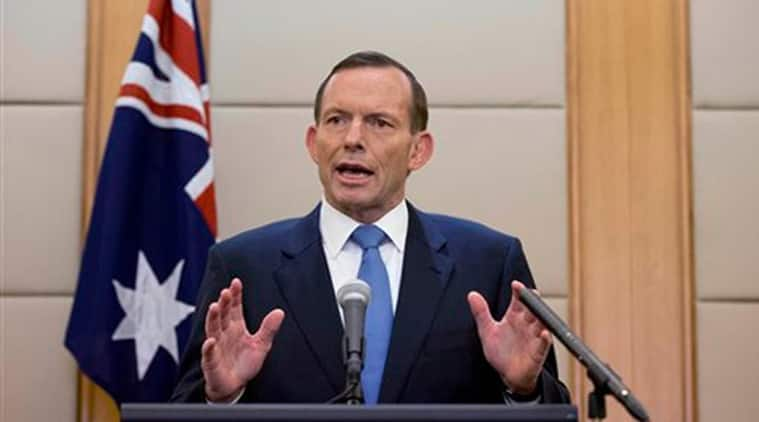Summary Results:
| Ranked in order of change between 2014 and 2015 |
2015 amongst |
2014 Sept |
2013 Dec |
||||||
| Everyone | Labor Supporters | Coalition Supporters | Rated by (how well known) | Everyone | Everyone | ||||
| Defence | Kevin Andrews* |
47.7 |
35.7 | 60.0 | 63.0 | 37.5 |
42.9 |
||
| Education | Christopher Pyne |
42.0 |
27.0 | 57.2 | 77.0 | 36.0 |
34.6 |
||
| Employment | Eric Abetz |
40.9 |
27.9 | 54.5 | 68.0 | 36.6 |
39.6 |
||
| Treasurer | Joe Hockey |
35.9 |
23.3 | 49.4 | 96.0 | 32.2 |
46.9 |
||
| Attorney-Gen. & the Arts | George Brandis |
43.2 |
29.9 | 56.8 | 65.0 | 39.0 |
42.5 |
||
| Small Business | Bruce Billson |
47.4 |
35.3 | 60.2 | 51.0 | 42.9 |
44.1 |
||
| Industry | Ian Macfarlane |
47.7 |
36.5 | 59.4 | 56.0 | 43.8 |
42.9 |
||
| Finance | Mathias Cormann |
44.2 |
29.8 | 59.3 | 57.0 | 40.8 |
45.2 |
||
| Foreign Affairs | Julie Bishop |
62.0 |
49.4 | 75.5 | 93.0 | 57.6 |
45.0 |
||
| Indigenous Affairs | Nigel Scullion |
47.4 |
37.3 | 57.7 | 49.0 | 44.4 |
46.7 |
||
| Trade & Investment | Andrew Robb |
47.9 |
34.5 | 61.1 | 56.0 | 45.0 |
44.7 |
||
| Dep. PM & Infrastructure & Reg. Development | Warren Truss |
45.0 |
33.3 | 56.7 | 66.0 | 42.6 |
43.3 |
||
| Environment | Greg Hunt |
41.5 |
26.9 | 56.9 | 60.0 | 39.5 |
39.7 |
||
| Social Services | Scott Morrison* |
46.9 |
30.4 | 63.5 | 69.0 | 44.7 |
38.5 |
||
| Communications | Malcolm Turnbull |
52.7 |
44.3 | 61.8 | 84.0 | 51.1 |
50.6 |
||
| Immig. & Border Protect. | Peter Dutton* |
44.5 |
29.6 | 59.8 | 70.0 | 43.8 |
46.7 |
||
| Agriculture | Barnaby Joyce |
47.6 |
35.5 | 59.9 | 76.0 | 47.1 |
45.9 |
||
| Minster for Health & Sport | Sussan Ley (new)* |
48.3 |
37.6 | 59.3 | 54.0 |
48.4 |
|||
| Prime Minister | Tony Abbott |
36.7 |
20.2 | 55.1 | 98.0 | 39.1 |
41.5 |
||
* Changed portfolio since prior survey
Ratings scores were applied as follows: Excellent 100, Good 75, Average 50, Poor 25 and Terrible 0. People who did not know the minister or enough about their performance were excluded from the rating calculations. The proportion of people who did rate each minster is shown in the summary results table.
The ‘Rated by’ column shows the proportion of all voters who felt that they knew enough about each minister to give them a score. This effectively measures how well known each minister is.
NB: the sample size for the ratings varies according to the proportion of people that could rate each minster. Hence, if 80% of people could rate a particular minister, the sample size is approximately 800 (80% of 1,000). The rating amongst, say, Labor voters, will also be proportionately smaller (46% of 80% makes a sample size of 368).
The survey also asked which party the voters had voted for in the House of Representatives (lower house) in the September Federal election, and who they would vote for if there was an election tomorrow. The results below have been summarised to a two party preferred result:
| House of Reps | Actual 2013 Federal Election Results | Voting preference December 2013 | Voting preference September 2014 | Voting preference September 2015 |
| Labor | 46.5% | 48% | 55% | 53% |
| Coalition | 53.5% | 52% | 45% | 47% |

